The 4 pumpkins on my porch are protected by heavy security, including several wraps of fencing and wire mesh on top. If any fencing gets moved, my son is there to quickly fix the situation. He’s not afraid the pumpkins will be stolen.
He’s afraid of squirrels.
A couple of years ago, we put a smiling jack-o’-lantern on the front steps to the delight of our toddler son. He was much less delighted when he came home one afternoon to find a squirrel had eaten the face off Jack.
Become a Member
Make a lasting impact for nature when you join The Nature Conservancy.
The next year, we decided to wait until closer to Halloween to do the carving, just leaving the pumpkin whole. Within hours, the local fox squirrels had shredded it. And we had another sad youngster.
So this year, the pumpkins are behind a fortress until Halloween night. After that, the squirrels and other critters are welcome to them.
A lot of pumpkins are on display right now. Many are carved and won’t be eaten by humans. But animals love pumpkins. The good news is that pumpkins – provided they aren’t painted or coated – are safe, nutritious and delicious for wildlife.
And wild animals love pumpkins. Here I’ll take a look at ways animals enjoy pumpkins, from squirrels eating them to sand cats hiding in them, from your backyard to the zoo.
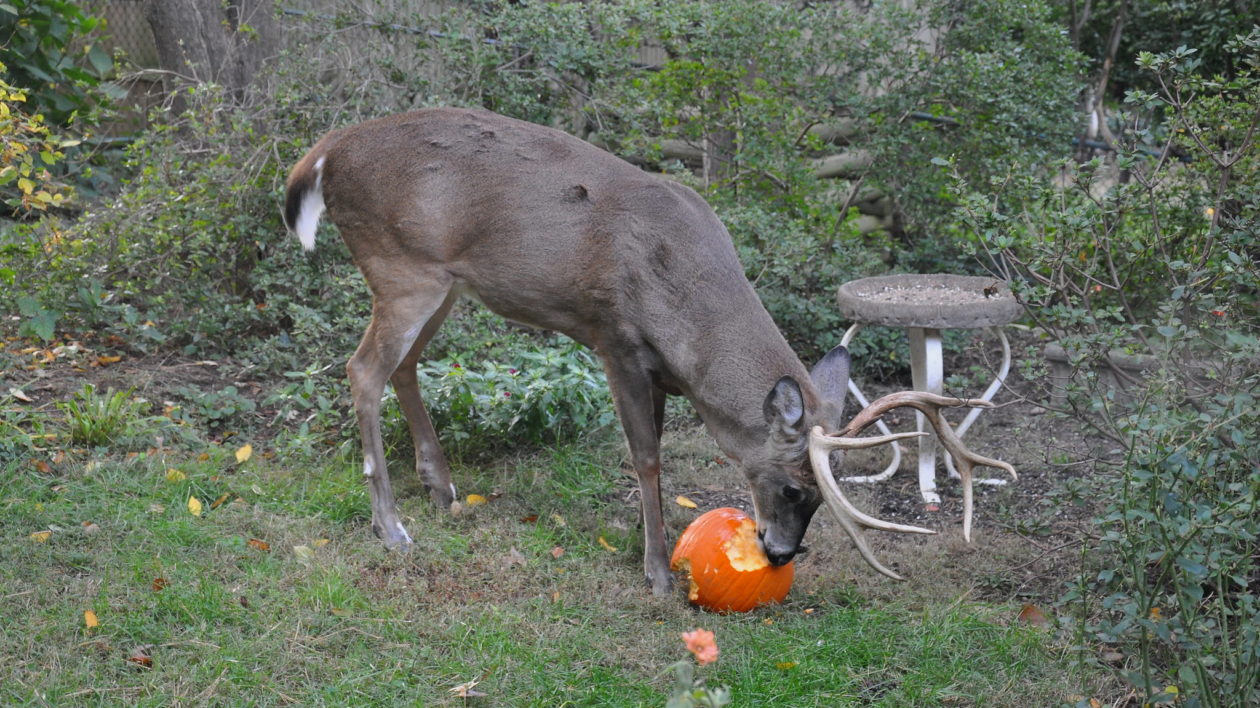
Recycle Your Pumpkin for Wildlife
If possible, don’t dump your used pumpkin in the trash. If nothing else, pumpkins are easily composted, feeding worms and microbes. But they also can be turned into a variety of wildlife treats. There are many resources online to help you with creative ideas, including a great list by the National Wildlife Federation.
In my experience, squirrels will be the first to lay claim to any pumpkin in your backyard. But this seems to vary by region and even by neighborhood. In some communities, I see lots of intact, carved pumpkins decorating yards. In others, it looks like the local pumpkins were subject to a chainsaw massacre, with parts strewn all over the lawn thanks to industrious and hungry squirrels.
But many other wild animals eat pumpkins, including porcupines, raccoons, opossums and deer.
Some question whether it’s a good idea to feed wildlife, a point well taken. However, many of these species are animals already visiting the bird feeder. So feeding a pumpkin or two is unlikely to pose any threat. That said, if you live in an area frequented by bears, forego leaving pumpkins outside so as to not habituate the animals.

Birds and Butterflies
Many bird feeding sites note that birds love pumpkin seeds, in particular such backyard favorites as mockingbirds, cardinals and catbirds. Most also suggest roasting the seeds. I should note that if I’m going to the trouble of roasting seeds, I’m probably going to eat them myself.
Another way to involve the bird life is turn the pumpkin into a recyclable feeder. This can be as easy as cutting a pumpkin in half, hollowing it out and filling it with seeds. Of course, if you have an inclination for crafts, you can find an endless variety of fun patterns and designs for pumpkin bird feeders online.
I have tried this. To repeat a familiar theme: The squirrels beat the birds to the seed. Then they ate the pumpkin.
You can also attract late-season butterflies by cutting up chunks of pumpkin and lying them out. This could also work in attracting nocturnal moths, especially if you mixed pulpy pumpkin with beer and brown sugar, then smear it all on a tree. You can visit the bait in the evening and see unexpectedly cool moth species. (See Ken Keffer’s guide to the growing sport of mothing for more ideas on bait and tactics).
You can get really creative when it comes to attracting wildlife with pumpkins. But zoos, it turns out, take it to the next level.
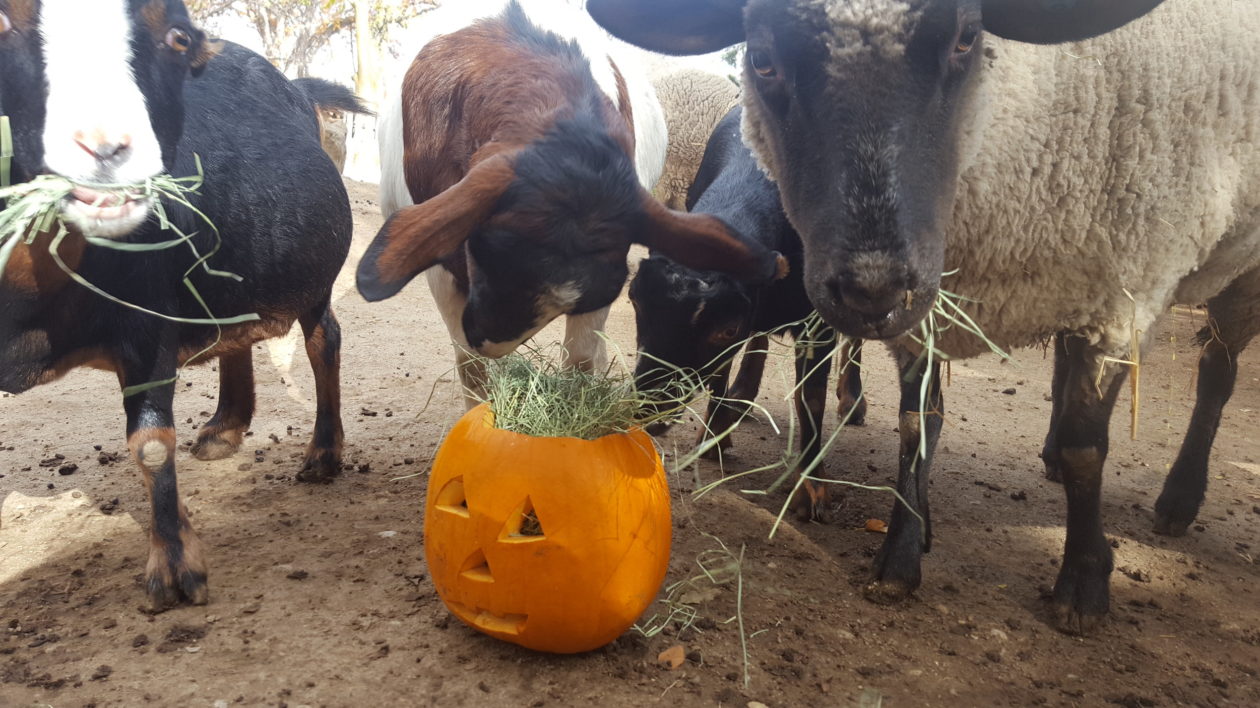
Pumpkin Enrichment
Zoos often provide pumpkins for animals as a novel way to provide enrichment. Visitors might delight at otters playing with a pumpkin as a “pool toy” or observe primates figuring out how to “open” a pumpkin to get at food inside.
To learn more about how and why zoos utilize pumpkins, I talked to staff at Zoo Boise, my local zoological park and a leader in wildlife conservation efforts. (Full disclosure: my wife works there).
Zoo Boise places dozens of pumpkins each year in animal exhibits, to provide a variety of forms of enrichment. “Enrichment can involve many forms of stimulation,” says Harry Peachey, Zoo Boise’s curator. “Enrichment can offer animals mental or intellectual stimulation or appetite stimulation, or it could stimulate one or more of the animal’s senses.”
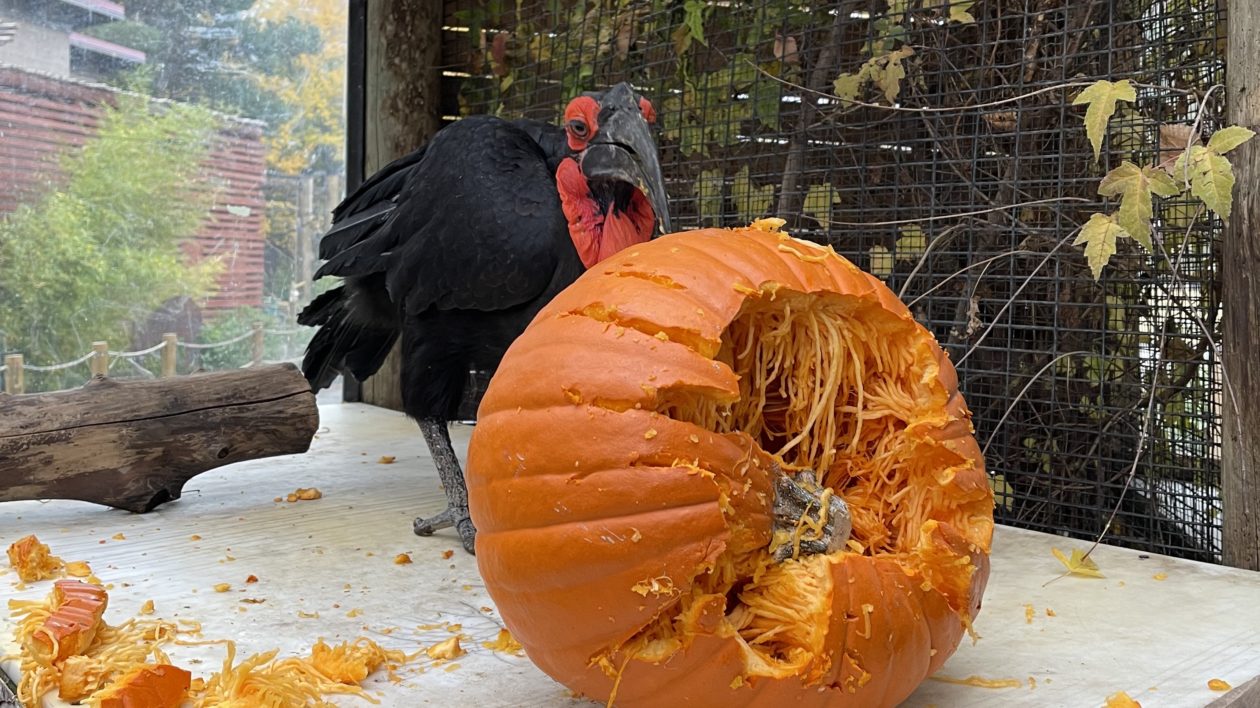
Like humans, animals love novelty. A pumpkin is something new for the animal to interact with, and the zoo uses pumpkins in almost endless ways. For a California kingsnake, a jack-o’-lantern is a nice place to search for prey and hide. And it’s a nice bonus that a school group might be treated to a snake slithering out the pumpkin’s eye or mouth.
“Anytime we offer enrichment, we go through a full review process,” says Melissa Wade, assistant curator at Zoo Boise. “We raise and evaluate any safety concerns. We observe the animals and how they interact. We never want a negative response. If the animal doesn’t react to the pumpkin at all, we want to make sure it’s because they aren’t scared.”
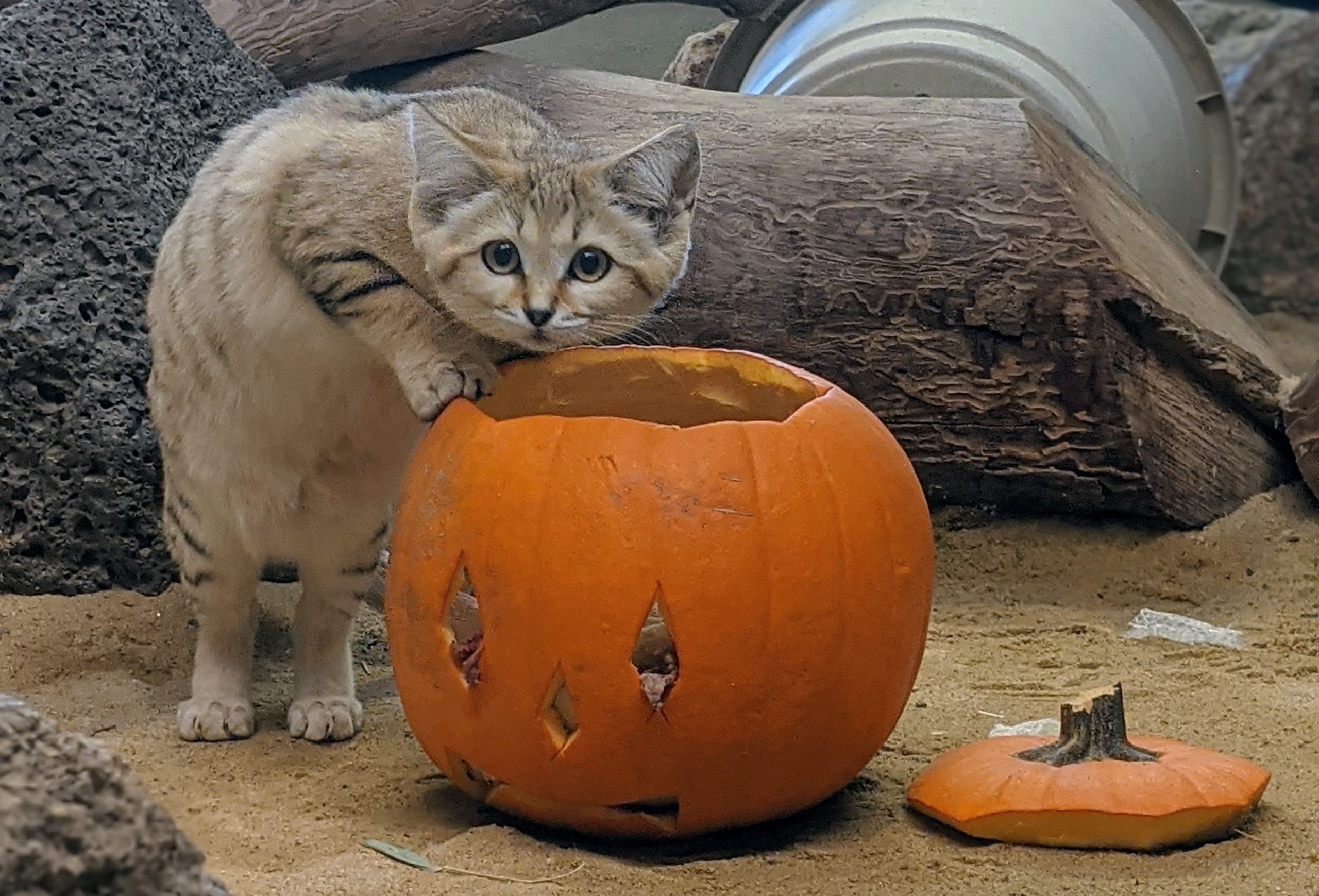
But for most animals, pumpkins are welcome. The zoo received the pumpkins this year as donations from a supermarket (it doesn’t take pumpkin donations from individuals). Rodents enjoy gnawing on the pumpkins and eating them, while carnivores treat them basically like a ball. On the day I called, a ground hornbill had just thoroughly dismantled its pumpkin, a not-unusual occurrence.
The reaction to the pumpkins can vary. Peachey used to work with elephants, and he noted that most of the animals just ignored pumpkins. “Then we put in a 1,000-pound pumpkin that had won the giant pumpkin contest in Ohio,” he says. “That elephant smashed it, climbed on top of it, threw the pieces around. Then he rode on the remaining chunk with his front feet like he was skiing with it.”
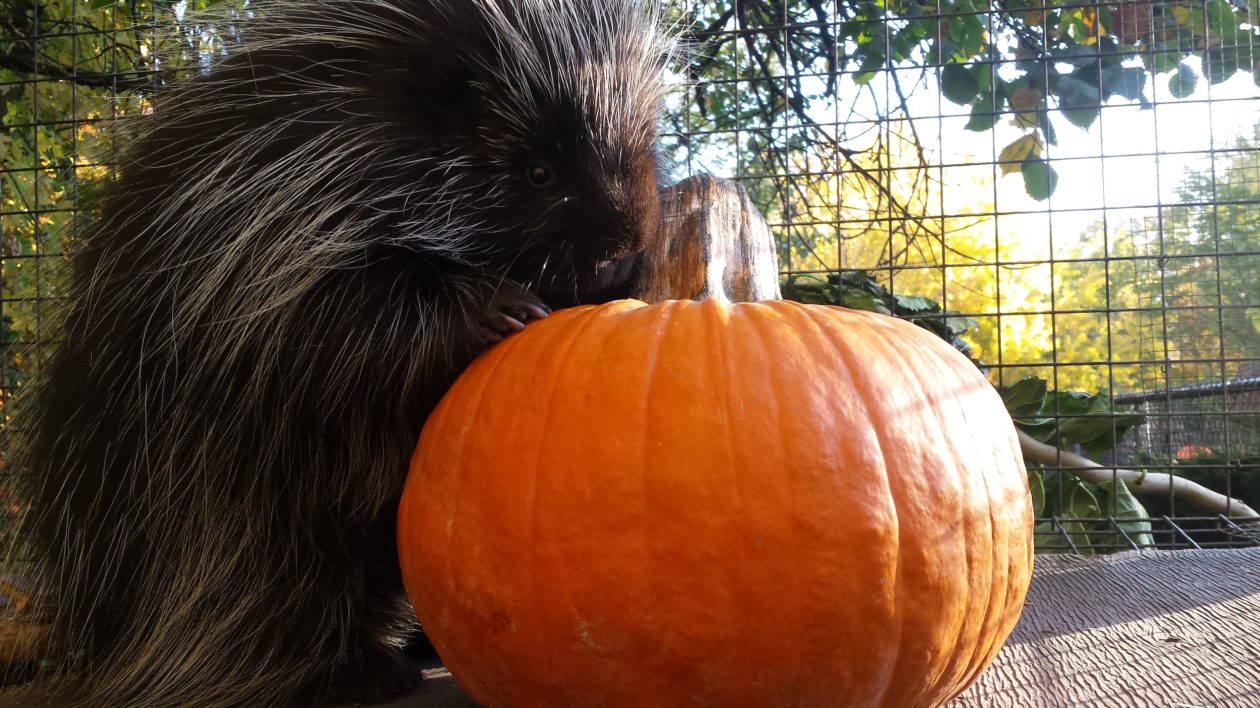
And if the animal doesn’t eat the pumpkins? Well, by now, you probably know the answer to that. “If our animals don’t get to the pumpkins,” says Jeff Agosta, Zoo Boise marketing and public relations coordinator. “The squirrels certainly will.”
Of course, having pumpkins in with the animals also resonates with visitors, especially kids. They’re in full-on Halloween mode, and to see a lion or hornbill playing with a pumpkin is, well, a treat. This week, for instance, many kids got to see a sand cat hiding inside a pumpkin. What might have been a sleeping cat is now something that fills their imagination, and maybe something more.
“We want to connect our community with wildlife and for them to embrace conservation,” says Agosta. “When they see a sand cat interacting with a pumpkin, it’s no longer a species. They’re seeing the animal as an individual. That builds empathy. And hopefully that empathy leads them to that next step of wanting to protect wild animals.”




Love your articles, Matthew. I am a big fan.
This wonderful embedded Halloween video was an added bonus.
85 year old Patricia from WA State
Hi Patricia,
Thanks for the kind words, and thanks for reading.
Best,
Matt
Thank you Matthew, your articles are always fun and informative. I’ve recommended the site.
I am glad you enjoyed the story, and many thanks for recommending our site!
Best,
Matt
Great video! Also, wonderful photos and information about pumpkin-love among wild animals!
Cool Green Science is the best!!
Gail,
Thank you for your support and for reading Cool Green Science!
Matt